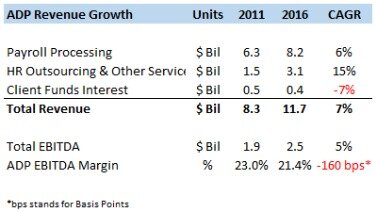
10-K filings are available on the investor relations page of any publicly traded company or on the Securities and Exchange Commission (SEC) site. A fiscal year could be a 12-month period of time or a 52/53-week period of time. The tax year of 52 to 53 weeks is necessary when a fiscal year is based on weeks instead of months. That’s because 52, seven-day weeks add up to only 364 days, so an occasional 53-week year helps keep the year ending around the same date. However, some businesses, governments, non-profits and self-employed individual taxpayers use a different year known as a fiscal year. If the short tax year is a result of the fact that the company is changing its tax year, its income tax typically will be based on its annualized income and expenses.
The calendar also adds a 53rd week when applicable—its fiscal calendar for 2021 through 2023 adds a 53rd week in the fiscal year 2023. Using fiscal years that are separate from or organized differently than calendar years has several advantages. For the U.S. government, the fiscal year timing allows Congress to process legislation for appropriations. Additionally, it helps federal agencies implement the current years’ budget, find funding for the following year’s budget, and plan for the budget two fiscal years ahead of time. Fiscal years are often designed to accommodate 364 days (52 weeks multiplied by seven days), leaving 1.25 days per year unused. The extra days—including leap days—are totaled up into another week which is tacked onto a future fiscal calendar every five or six years.
Learn How NetSuite Can Streamline Your Business
Working with an adviser may come with potential downsides such as payment of fees (which will reduce returns). There are no guarantees that working with an adviser will yield positive returns. The existence of a fiduciary duty does not prevent the rise of potential conflicts of interest.

A business may choose any consistent fiscal year that it wants; however, for seasonal businesses such as farming and retail, a good account practice is to end the fiscal year shortly after the highest revenue time of year. Consequently, most large agriculture companies end their fiscal years after the harvest season, and most retailers end their fiscal years shortly after the Christmas shopping season. In the United States, the federal government’s fiscal year is the 12-month period beginning 1 October and ending 30 September the following year.
File
To the IRS, sole proprietorships lack distinct identities apart from their proprietors, who as individuals typically use a calendar year when filing their returns. Month often refers to particular calendar months, though 52-to-53-week fiscal years commonly use 13 to 14 4-week accounting periods, termed months, which need not align with calendar months. The fiscal quarters are usually January 1 to March 31, April 1 to June 30, July 1 to September 30, and October 1 to December 31. However, the particular quarter referred to as Q1 depends upon the type of fiscal year being used. The default IRS system is based on the calendar year, so fiscal-year taxpayers have to make some adjustments to the deadlines for filing certain forms and making payments. While most taxpayers must file by April 15 following the year for which they are filing, fiscal-year taxpayers must file by the 15th day of the fourth month following the end of their fiscal year.
This funding will help protect local ecosystems and communities from climate change, habitat loss, and pollution in places like the Great Lakes, Long Island Sound, Puget Sound, and Southern New England Estuaries. In addition, the bill provides $81.6 million for staffing newly constructed facilities to ensure IHS has the health care providers to meet increased demand. Tax on a short period tax return is figured differently for each situation.
We do not manage client funds or hold custody of assets, we help users connect with relevant financial advisors. Volatility profiles based on trailing-three-year calculations of the standard deviation of service investment returns. Founded in 1993 by brothers Tom and David Gardner, The Motley Fool helps millions of people attain financial freedom through our website, podcasts, books, newspaper column, radio show, and premium investing services. However, a company incorporated in Hong Kong can determine its own financial year-end, which may be different from the government fiscal year.
Seasonal businesses also tend to use fiscal years for accounting purposes. For example, if a company brings in most of its revenue during the spring and incurs most of its expenses during the winter, then a fiscal year ending in July or August might make more sense than one ending in December. In Iran, for example, the fiscal year is set according to the Hijrī calendar, often called the Islamic calendar. Consequently, the budgeting principles of managerial accounting start of the Iranian fiscal year, which usually begins on March 21, does not correspond to the beginning of any month in the Gregorian calendar, which is used in much of the rest of the world. For companies that operate on a seasonal basis, using a fiscal year may be beneficial. This is because it may provide a more accurate reflection of the company’s operations, allowing for revenues and expenses to better align.
Changing your tax year
More detailed definitions can be found in accounting textbooks or from an accounting professional. For example, school districts use the fiscal year ending June 30 because the school year usually ends around June every year. Retailers tend to end fiscal years on January 31 because many do an outsized portion of their sales each December and also have a large influx of returns during January. Although it may not seem like it at first glance, there is a method to this fiscal year madness. Most fiscal years are designed to conform to the organization’s natural year around which its activities and flow of funds are organized.
Cisco Schedules Conference Call for Q4 and Fiscal Year 2023 … – Cisco Investor Relations
Cisco Schedules Conference Call for Q4 and Fiscal Year 2023 ….
Posted: Wed, 02 Aug 2023 22:18:09 GMT [source]
The fiscal year for many nonprofit organizations runs from July 1 to June 30. Fiscal years that vary from a calendar year are typically chosen due to the specific nature of the business. For example, nonprofit organizations typically align their year with the timing of grant awards. Companies often use fiscal year reporting for seasonality or timing purposes.
fiscal year Business English
It can come up when you start a business in the middle of a tax year or change your fiscal year. In the world of accounting, finance and taxes, there’s more than one type of year. In addition to regular years, there are a number of different fiscal years. A fiscal year is the 12-month period a company uses for accounting purposes.
- For instance, it is common for retail companies to end their fiscal year on Jan. 31, after the holiday season has ended.
- The extra days—including leap days—are totaled up into another week which is tacked onto a future fiscal calendar every five or six years.
- Many retailers generate a large chunk of their earnings around the holidays, which could explain why Macy’s chooses this end date.
- In the United States, eligible businesses can adopt a fiscal year for tax reporting purposes simply by submitting their first income tax return observing that fiscal tax year.
- With NetSuite, you go live in a predictable timeframe — smart, stepped implementations begin with sales and span the entire customer lifecycle, so there’s continuity from sales to services to support.
When comparing the financial figures of two companies, it’s important to note the reporting periods for both. Companies planning to go public may also choose to shift from a calendar year to a fiscal year, to present a more enticing financial picture to potential investors. That is, by choosing a fiscal year that ends on a historically high note, the company may look like a better buy. Additionally, companies may choose to use a fiscal year to spare their employees the rush of closing the business year during the holidays, when many people take time off.
School districts typically have fiscal years of July 1 through June 30 to coincide with its natural business year. Large retailers often end their fiscal years on the Saturday closest to January 31 in order to include sales returns from its peak December sales. The retailers’ interim periods will be 13-week “quarters” consisting of one 5-week “month” plus two 4-week “months”.
Every 12 months, companies are required to report their income and expenses to the government to calculate and pay their taxes. These financial reports are also used to prepare financial statements and for budgeting and auditing purposes. Companies typically set their fiscal years according to the nature of their businesses and when revenues and expenses best align.
Fiscal year versus calendar yearA fiscal year is an accounting year that, unlike the calendar year, doesn’t necessarily end on Dec. 31. A fiscal year is essentially a customized 12-month period used for accounting purposes. For example, a company might operate on a fiscal year that begins on Nov. 1 and ends on Oct. 31. Companies that follow a fiscal year must still adhere to IRS tax filing deadlines, which are based on the calendar year. Unless a business has a required tax year, as stipulated by the IRS, its tax return due date is determined by the fiscal year’s end set by the company and, if necessary, approved by the IRS.
For many businesses, using a 12-month fiscal year facilitates year-to-year data comparisons, as each year will have the same number of days. However, some businesses have strong weekly revenue patterns, and so it is more important to them to begin and end accounting periods on the same day of the week. For example, a movie theatre that does most of its business on Saturdays and Sundays may choose a 52-to-53 week fiscal year to ensure that most periods have the same number of weekend days and can be more easily compared.
If you do any of these things, you have to get IRS permission to switch to a non-calendar fiscal year. You can do so by filing Form 1128, Application to Adopt, Change or Retain a Tax Year. Additionally, you may have to request a ruling and pay a fee to get the ruling on your request for a different fiscal year.
This article lays out how a fiscal year works, why companies opt to use them and related IRS requirements. Additional benefits include real-time insights about the company’s financial performance, as well as compliance with government regulations and accounting standards. A financial year equals 12 consecutive months during which a business tracks its finances for tax and reporting purposes. Businesses can follow the standard Gregorian calendar, which begins Jan. 1 and ends Dec. 31. Or they can designate an alternate fiscal year that best suits their accounting needs, such as one that closes after an expected increase in revenue. This is often the case in the retail industry, where many companies conclude their fiscal years at the end of January to include holiday season earnings.
As explained above, the reporting period can vary from one publicly traded company to another. A company may switch from calendar year reporting to fiscal year reporting, or shift their fiscal year reporting, to align with peers, appear more attractive to investors, and ease pricing demands from customers. However, even if two companies’ reporting periods do not align, it’s not impossible to make comparisons. In this case, you could then use the last twelve months, or trailing twelve months (TTM) metric to examine the activities of the last twelve months for both companies.
